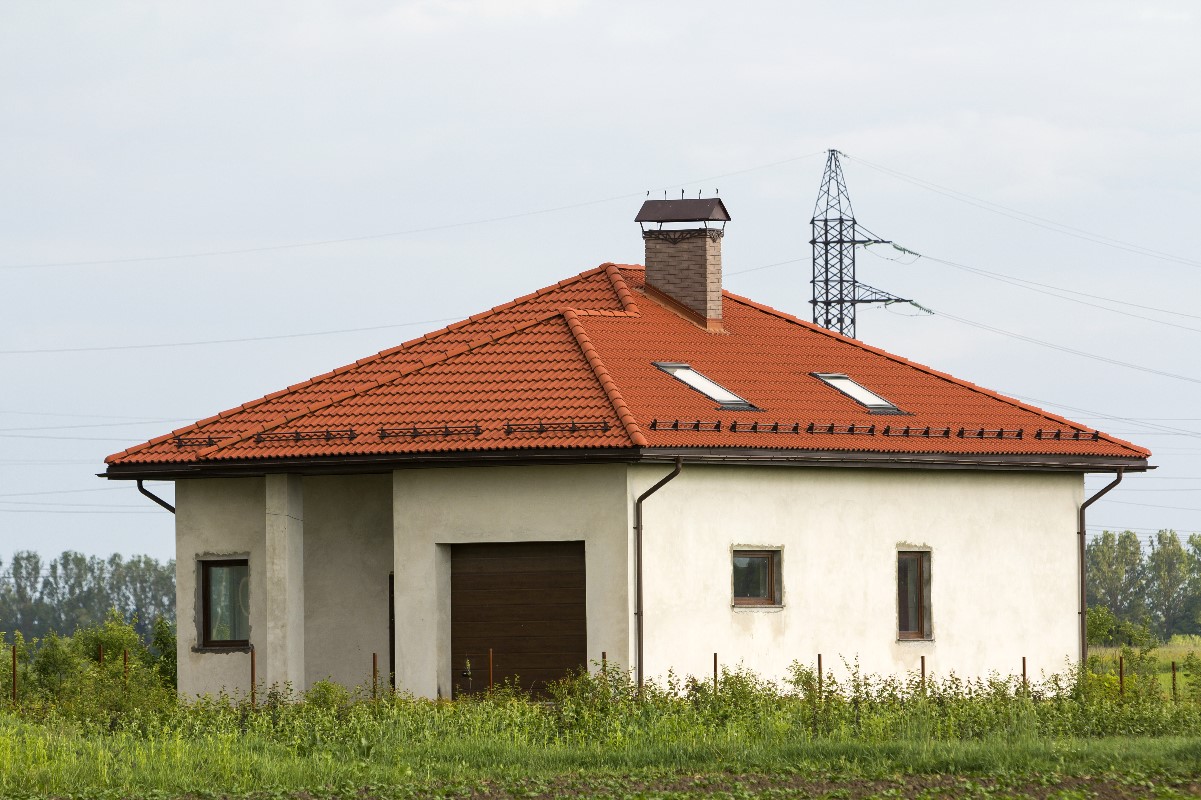
Green efflorescence on plaster is unfortunately a fairly common sight. Fortunately, there are ways to get rid of them. Thanks to that the facade will regain its former freshness.
Green tarnish on elevation is algae, which are located on damp walls. They are not dangerous for us, however they may be a breeding ground for mould which is dangerous for our health and often causes allergies. That is why we have to get rid of the green growth on the facade quickly.
Algae can attack various surfaces, mainly plaster, but also concrete or paint. Very often they appear when the surface is quite humid. Insufficient protection from moisture and water makes the walls, especially those in the north and east-north, full of green growth. Algae can also appear over windows that are opened frequently. Cold walls have more moisture in them, so algae can spread quickly. Walls covered with plaster and paint with limited vapour permeability create ideal conditions for algae growth. Then, the moisture collects inside the wall, which makes it a good breeding ground for algae and later mould fungi. Therefore it is worth choosing plasters which have high vapour-permeability.
Algae mainly attack walls covered with old types of plaster. These are acrylic plasters, which adhere well to the wall, but do not let moisture through. Furthermore, also walls that are too cooled and badly heated can be attacked by algae. With low thermal inertia and with thermal insulation systems that are thin-film, the walls are much more likely to develop green growth.
First of all, thicker layers of algae should be removed mechanically. This can be done with a spatula or brush, for example. A good way is also to remove algae from the wall with the help of a pressure washer. However, you have to be careful because if the pressure is too high, pieces of plaster can be removed along with the algae. If there are large layers of algae, it is better to first scrape them off gently with a spatula and then wash off the more resistant algae with the pressure washer. Do not direct the spray of the pressure washer so that the water splashes onto other parts of the façade. If the water that washed away the green growth from the façade gets onto another part of the building, it may mean that this part is too wet
The sooner we discover the presence of algae, or so-called green tarnish, on the façade, the better. This will reduce the scope of work considerably. Removal of algae can be divided into stages, so you can get rid of it faster for good. Thick layers should primarily be removed mechanically, for example with a spatula. The rest can be cleaned with a pressure washer. Be careful, however, not to wash off the plaster with water. Also, water should not get on parts of the building that do not have a green coating on them.
You can easily counteract the formation of green tarnish on a façade. First of all, you should remember to insulate the façade well. This can be done, for example, with the help of special wool, or you can make insulation with styrofoam. Thanks to this, green tarnish will appear less frequently on the wall. You should also use special impregnates that prevent its formation. They make that tarnish not only does not appear, but also the paint on the plaster is protected against UV radiation. Thanks to such care for our elevation, we can be sure that the green tarnish will not return. However, spores may remain on a part of the elevation, therefore its professional cleaning with a pressure washer should not only help to get rid of the infestation, but also prevent the recurrence of this problem. It is worth remembering that the shaded side of the elevation on the west side is particularly vulnerable.